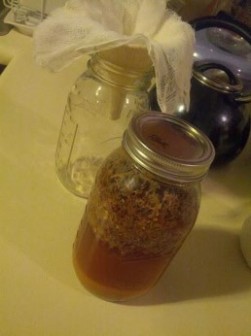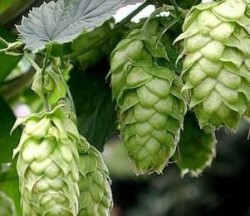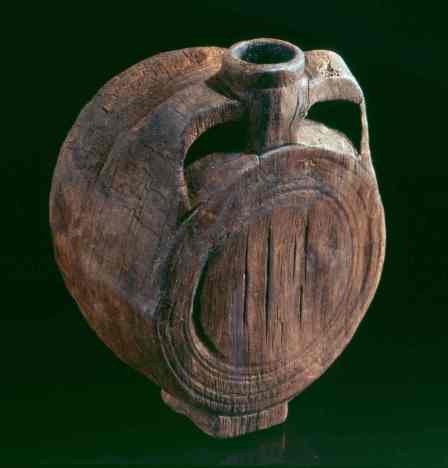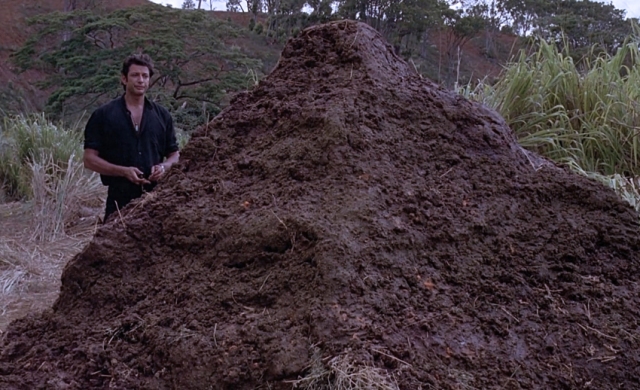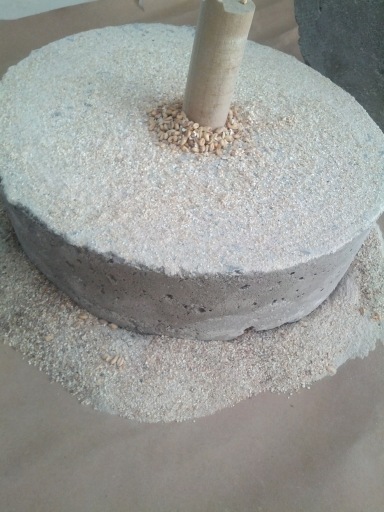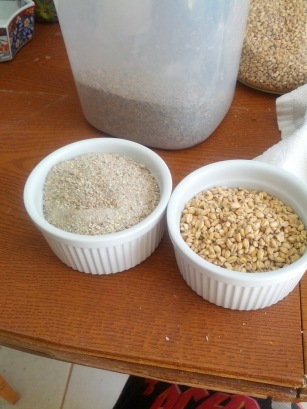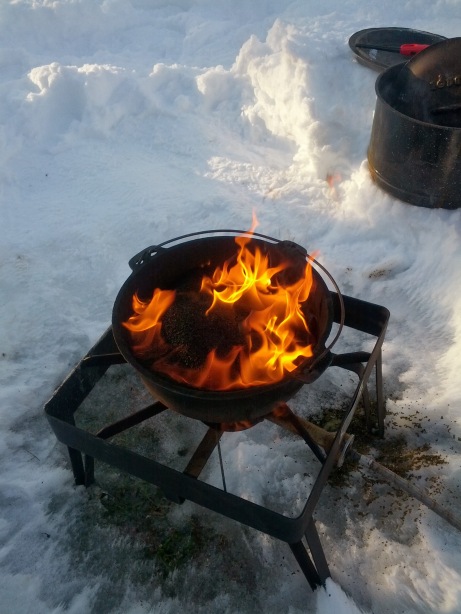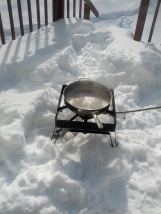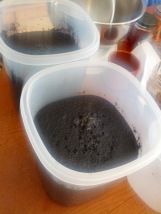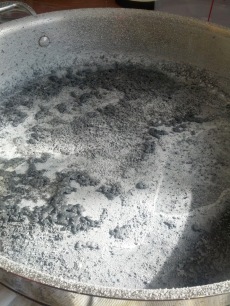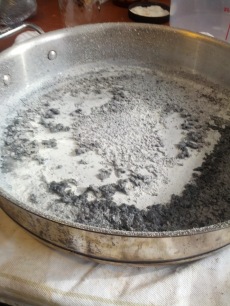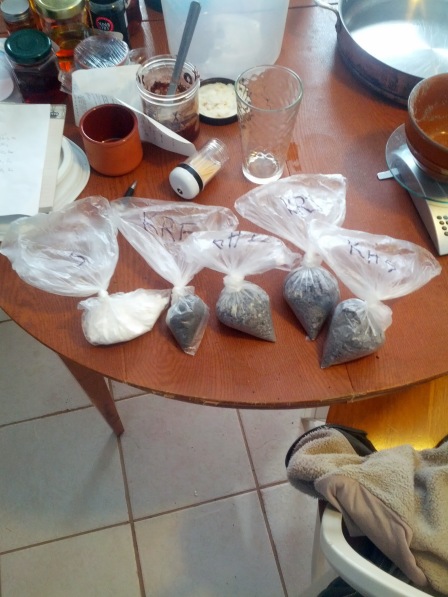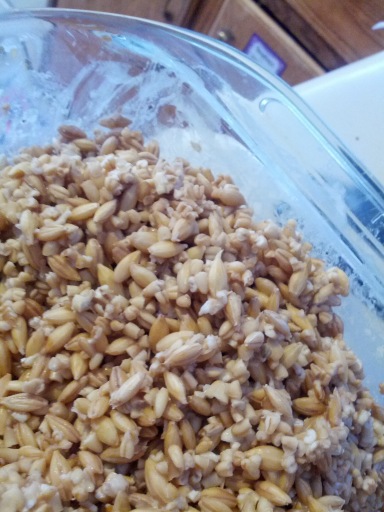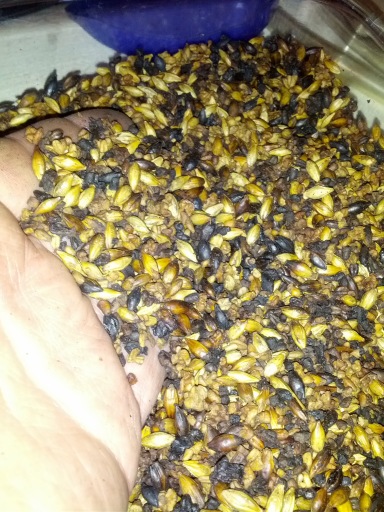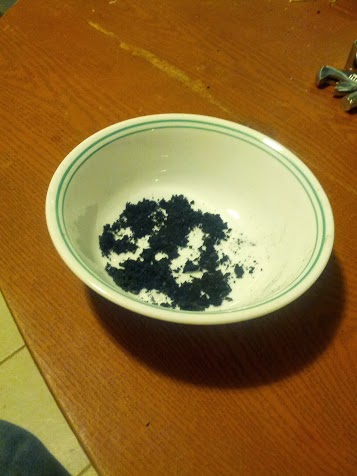*tap tap tap*
Is this thing on?
So it’s been a little while since I last wrote an entry. Fear not! I’m still plugging along, brewing crazy things and writing weird poetry and telling stories about people who kill other people over beer. Good things all around! I’ve just had a double helping of Life and Such, and so things have gone off track.
Enough excuses. Back to writing.
—————————————–
A couple of weeks ago, I followed up on an opportunity to talk about historical brewing at a local museum. The event was focused primarily on the history of brewing in the Hudson Valley of New York, but as the museum was also running a piece on ancient Egypt, the program director wanted someone to speak about ancient Egyptian brewing.
Through some various channels, I was tapped to give a brief talk on this topic. Now, it’s not my primary area of research, but mindful readers may remember that I touched on a prospective Egyptian precursor to beer as part of my research on Viking-era brewing. I eventually settled on its existence as being somewhat central to my reconstructed processing technique, representing a yeast starter of sorts that would have been prepared daily as a medicine, and which would result in a healthy yeast culture in the residue.
One of the things I’ve begun to question is the oft-repeated “story” of ancient beer – ancient peoples are often alleged to have drunk a weak alcoholic beverage that was filled with yeast and residual grain. It is sometimes argued that this was drunk in lieu of water (an idea which I and others seriously question, and for which extraordinarily little evidence actually exists), and it is sometimes argued that such a beverage would be an extremely nutritious “liquid bread” (though we also know that ethanol inhibits the absorption of many nutrients).
What I’m going to do here is take you through my talk about a particular Egyptian grain beverage called “zythum,” deconstruct the standard story, and reconstruct a plausible alternative (which is also supported experimentally).

Because getting your historical knowledge base from popular TV can’t possibly go wrong.
Right guys?
Guys?
So What the Hell is “Zythum?”
“Zythum” is the Latin equivalent of a Greek word “zythos.” “Zythos” is first seen in the writings of the 1st century BCE Greek historian Diodorus Siculus, who wrote the Bibliotheca Historica. There, he describes “zythos” thusly:
κατασκευάζουσι δὲ καὶ ἐκ τῶν κριθῶν Αἰγύπτιοιπόμα λειπόμενον οὐ πολὺ τῆς περὶ τὸν οἶνονεὐωδίας, ὃ καλοῦσι ζῦθος.
Now, as evidenced in the text above, “zythos” is a-
Wait, what? You don’t read ancient Greek? Shame on you!
To be fair, neither do I, and that’s why we often must rely on translations of such writings. Here, try this:
The Egyptians also make a drink out of barley which they call zythos, the bouquet of which is not much inferior to that of wine.
The reason I point this out is that the process of translation is not a perfect one – ideas sometimes have difficulty crossing cultural boundaries, and so we must attempt to capture the “sense” of a word. Sometimes this means that we may obscure part of its literal meaning, or we may lose some nuance that is really only understood by the native culture. And of course, English has this nasty habit of grabbing older words from other languages to talk about lots of things – so sometimes we use an older word from another language to talk about a thing that we do, even if our practice differs from the old one. Keep that in mind as we proceed.
OK, so! If we look at this one source, we can see how one might reasonably conclude that “zythos” is an analogue to beer, right? Diodorus compares it to wine on the parameter of its bouquet, so perhaps we could reason that the two must share some commonalities. I mean, why compare it to wine if it wasn’t being used like wine, right? And it’s made of barley, so we have the possibility of an alcoholic drink made of barley. Heck, even the actual word “zythos” gives us a clue as to its nature – it’s closely related to lots of other words that indicate leavening.
So a barley drink that is related to wine and that is leavened? Sounds like beer to me!
But it’s a poor researcher who limits himself to one source. Let’s look for other evidence of Egyptian barley liquids:
From the Greek historian Herodotus in the 6th century BCE:
For wine, they use a drink made from barley, for they have no vines in their country.
Well, there it is again. We have evidence of a barley drink that is related to wine. Seems that one could draw a line from “zythos” back to at least the 6th century BCE, right? So there we go, reinforcement that “zythos” is beer and it goes back a ways.
Well, not so fast, cowboy. See, “wine” doesn’t have to mean alcohol – that’s our most common sense of the word, but in ancient Greece and Rome, “wine” was used to refer to several different products of the vine. Cato the Elder gives a “wine” recipe in De Agri Cultura that involves diluting the must 1:5, adding seawater and vinegar, and waiting a bit. It makes an excellent vinegar after a fashion. Doesn’t really sound like merlot, does it? And in many places, the juice of grapes is called “wine” as soon as it is pressed – the fermentation doesn’t seem to be the critical factor there. So while Herodotus talks about “wine” and Diodorus talks about “wine,” there’s no guarantee they’re talking exclusively about a strong alcoholic beverage.
Let’s move on. How about Hippocrates, the father of medicine? He wrote an entire treatise on the use of barley in remedies in the 5th century BCE:
Ptisans are to be made of the very best barley, and are to be well boiled, more especially if you do not intend to use them strained.
Fun fact: “ptisan” is etymologically connected to “tisane,” which is a term we use to refer to “teas” made of things that don’t actually involve tea leaves. Neat, huh? Also as a side note: Hippocrates mentions that people routinely refer to various remedies over-broadly, lumping several different things together under a single name. Something else to think about when you read about “wines” made of barley, eh?
But it seems like we’re seeing alternate uses for barley drinks – here, a medicinal beverage is concocted.
How about we jump ahead a bit to one of my favorites, Pliny the Elder, who wrote Naturalis Historia in the 1st century CE. I’ve talked about many of his writings in various places on this blog, but there’s one in particular that is of note here. He discusses a variety of non-wine beverages made from grains:
Different beverages, too, are made from the cereals, zythum in Egypt, cælia and cerea in Spain, cervesia and numerous liquors in Gaul and other provinces. The yeast of all of these is used by women as a cosmetic for the face.
Several things are notable about this statement. For one, the specific chapter in which this is found is in a book that deals with medicinal remedies derived from plants (book XXII). Pliny also discusses “wines” of grain in a completely separate section (book XVIII), and it is clear that these are distinct types of beverages.
“Zythum” is the Latin equivalent of “zythos,” and here we see Pliny discussing it. So now we have yet another possible view of the drink.
One should also note the other listed beverages. Pliny is calling them different things, but sort of lumping them together in the same functional category: a book all about remedies from plants discussing several beverages in the same sentence hints at a similar function. The word “cervesia” is notable because similar words are used to mean “beer” in modern Romance languages. Yet here, it is clearly discussed outside of a “wine” context and in a remedy context.
We also see a common utilitarian purpose; the “yeast” (actually, the word was “spuma,” which means “foam” – one of those interesting translator choices again) is used by women as a facial cosmetic. Such a use may indicate a more frequent production, assuming Roman women were applying facial cosmetic regularly. In order to use it so, there’d have to be enough kicking around frequently enough.
And of course, the mention of “spuma” may help indicate a possibly fermented beverage – but one that is not as strong as wine, and which is used for remedy/utility purposes.
Well, now I’ve done it. I’ve gone and muddied the waters that had previously been clear and over-simplified. While one might be able to look at the evidence for “zythos” and argue for an alcoholic beverage, a more careful look at additional evidence calls that into question. It seems to be related to medicine (and the use of barley medicine is quite old), is noted separately from “wine,” and even the word “wine” may not mean what you think it means.
Many people, in times of confusion or need, have turned to various holy books for guidance. While I don’t normally put stock in such things, it seems that it will take a miracle to resolve this confusion. Let’s see what the gods have to say about this.

“Thou shalt not fruit thy beer, for that is totally lame and only appropriate for yellow swill in clear bottles.”
The Babylonian Talmud contains numerous laws, and in Pesachim 42b, we find this written:
What is EGYPTIAN ZITHOM? — R. Joseph learned: [a concoction made of] a third part barley, a third part safflower, and a third part salt. R. Papa omitted barley and substituted wheat. And your token is ‘sisane.’ They soaked them [these ingredients], then roasted them, ground them and then drank them. From the [Passover] sacrifice until Pentecost, they who
are constipated are relieved, while they who are diarrhoeic are bound. [But] for an invalid and a
pregnant woman it is dangerous.
The specific section in which we find this is a list detailing additional specific items which must be removed during Passover because they are chametz (typically meant as “leavened,” but Jewish law calls grain chametz in many other circumstances). One explanation for such a list is that they are mainly items which may be in the house, but whose manner of preparation is not known to the keeper of the house. Perhaps they are purchased from elsewhere. It would also seem to follow that the products must not be obviously leavened or fermented, or not obviously grain-based – otherwise, it would be obvious to remove them.
Note that a medicinal use again is indicated, and no specific mention of fermentation is made. One could suppose a sort of fermentation may happen (it is in a book talking about taking leavened things out of the house), but grain is chametz when mingled with water for 18 minutes – so it doesn’t have to be fermented.
Well, OK, so it may or may not be fermented. Probably isn’t obviously fermented, and given the high salt content (more about this later), the stuff would have to be fairly dilute to be reasonably drinkable – so it wouldn’t ferment far if it even did. In fact, it seems like the salt may be an attempt to control the fermentation – either it’ll be too salty to ferment but have a lot of calories from grain, or it’ll be too dilute to have appreciable alcohol.
Now let’s try something from the 10th-century Islamic empire. Here’s a recipe for something called fuqa (lit. “bubbly drink”) from a translation of an ancient cookbook:
Boil water, enough for making 50 beer glasses, and pour it on the malted barley. Stir and mix until only barley shells remain. Set it aside to cool down then strain it and take the amount enough for making 50 beer glasses. Add a suitable amount of salt (pure and white rock salt) so that the beer will be neither too salty nor bland. The best way to judge is for the beer-maker to taste it. Set the liquid aside until it settles and looks like clear water.
The recipe calls for ~1.1 kg of malted barley. A “beer glass” may have been as large as one cup (~250 mL) in capacity, so this recipe could be looking to make up to 12.5 L of liquid from 1.1 kg of barley malt – about a 1.022 OG assuming flawless extraction. That’s not very much at all. Also note the salt addition – seems reminiscent of the Talmud method, eh? And of course, the very beginning of the chapter about fuqa talks about the medical use of barley water – so again we have a medicinal context.
Here, you are ultimately instructed to sort of ferment the beverage – you leave it for 12 hours in a jar that was previously used to brew beer. The text warns against using the same jar too many times – it must be discarded once fermentation is apparent. So again we see evidence of a processing technique that may involve a weak non-obvious fermentation of a very dilute beverage.
Christian scholarship may also give us some clues. A 19th-century German scholar of ancient medicine found a fragment of text that was attributed to Zosimos of Panopolis, a 4th century CE Greek alchemist. You may recall that I discussed this before in another post, but I’ll repost the method here:
Take good pure barley and water, and soak it for a day. Spread it out and put it in a windy place for another day. Again soak it for 5 hours, then collect it in a sieve with handles, and soak it again after it has drained until it becomes puffy.
When this is done, dry it in the sun, until it deflates: The husk is indeed bitter.
Now mill (it), and make a bread-dough, adding leaven as in bread-making, and bake it very well. Then boil it well, and separate the sweet water, straining it through a sieve.
Some heat toasted bread in a pan with water, and cook it a bit, but neither must he boil it nor heat too long, and taking it from the fire, transfer to other vessels, and again heat and reserve (the liquid).
So now we’ve got a bread beer thing that also doesn’t talk about fermentation. Sounds an awful lot like Russian kvass, eh?
Hm. Based on my reading of all this information, I’m putting together a different picture than that oft-repeated story about daily beer. What I’m seeing is evidence of a non-or-lightly fermented beverage akin to a kombucha or kvass, probably made with a weak dilution of grain (and possibly herbs) and salt, that was used as a medicine and common drink. A lot like a fermented barley tea.
And that makes sense when you boil it down, doesn’t it? We know that alcohol is a diuretic, and that it lowers blood sugar, and that it has all kinds of properties that make it nutritionally deficient. At least two full processing methods seem to attempt to minimize ethanol production.
Imagine this: you’re the guy in charge of building the pyramids, and you’ve got your team with you (evidence suggests that the pyramids were actually built by skilled laborers and not slaves as previously thought). It’s hot as hell, and they’re hauling really heavy blocks. Do you want them drinking something that will dehydrate them and drop their energy levels, or would you give them a drink that is mostly water with added electrolytes (salt), carbohydrates (sugar and starch from the grain), B vitamins (assuming a light fermentation, yeast will grow and contribute nutrients), and possibly some poorly-controlled medicinal effects (herbs)? Like drinking pickle brine when you’ve been in the hot sun all day.
When you get right down to it, the idea of daily booze doesn’t make sense, and the evidence really seems to support this sort of fermented tea process.
But that’s all talk. How about some experimentation?

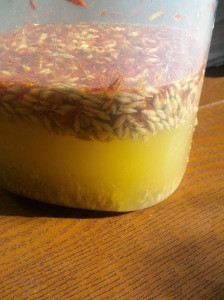
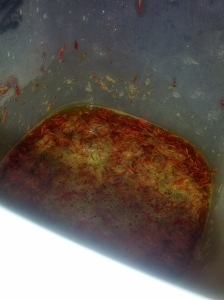
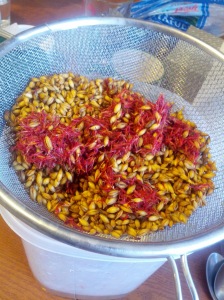

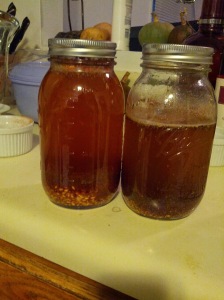
Equal parts barley, salt, and safflower (by volume), steeped in water until it was fully saturated, dried as per the method attributed to Zosimos. I was curious about the salt content, so I did a version with salt and another without. Picture 2 is the salted version; picture 3 shows the unsalted version, which began fermenting not too long after being submerged in water. This reinforces the idea that the salt content is at least in part intended to control fermentation.
The mass of stuff I started with in 2 was 134 g; after drying, I had 157 g. The unsalted version gained no mass at all. This indicates to me that the grains took up 23 g of salt during processing – giving a final salt content of roughly 15%.
That’s really damn salty, so I diluted the grains 1:10 as per the method indicated in the Islamic text. That would reduce the salt content in the drink to 1.5% – probably a manageable level. I also wanted to know about fermentation or not, so I did a Punnet square: salted/unsalted and fermented/unfermented.
What I discovered is that the beverage didn’t generate any alcohol at all, not even after days of fermentation. It did encourage yeast growth, and the salted/fermented version tasted something like chicken soup after about 24 hours. The unsalted version were flat and boring, but the salted version were pleasantly full – not quite as strong as pickle brine, but definitely filled with electrolytes. After enough time, the fermented versions became somewhat sour, but not unpleasantly so.
Really, this is like an ancient form of Gatorade. It’s all manner of not bad, and I highly recommend trying it! The high salt content seems to necessitate an extreme dilution of the stuff, and if it was being consumed every day, it really wouldn’t have time to make alcohol. When post people think of a “low alcohol” beverage, they mean 2 – 3% ABV, but I am talking about a drink that is literally non-alcoholic – probably under 0.5% ABV.
The most interesting part of all of this is the connection to other words that we translate to mean “beer.” I’ve used that connection to suggest that this processing method carries forward into Viking-era brewing – a grain/herb mixture fermented frequently, whose residue could be used to start a strong beverage. Makes sense, right? You’ve got a yeast propagation medium with a strong connection to health and cleanliness – seems like the kind of thing that would make a pure beverage, right?
And maybe this technique carried into the Germanic tribes outlying Rome, and maybe some brewers out there saw some pretty flowers growing around a tree and thought, “Man, I bet those would go well in that grain tea I love so much.” Maybe that’s how hops entered the equation all those years ago.
Of course, none of this analysis precludes an alcohol interpretation, either. “Wine” can mean a lot of things, and that includes wine. So maybe there were several traditions that existed at the same time. Maybe the daily beverage existed and a strong beverage was made as well, and both were called “zythos.” Hey, Bud Light and Sam Adams Utopias are both “beer,” right?
This is why we have to interpret archaeological evidence, and consider the paradigm under which we are operating – because sometimes we bring our modern biases into history, and they just don’t belong there.
This is perhaps how beer actually saved the world.





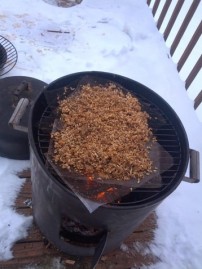




 4.) The Product
4.) The Product